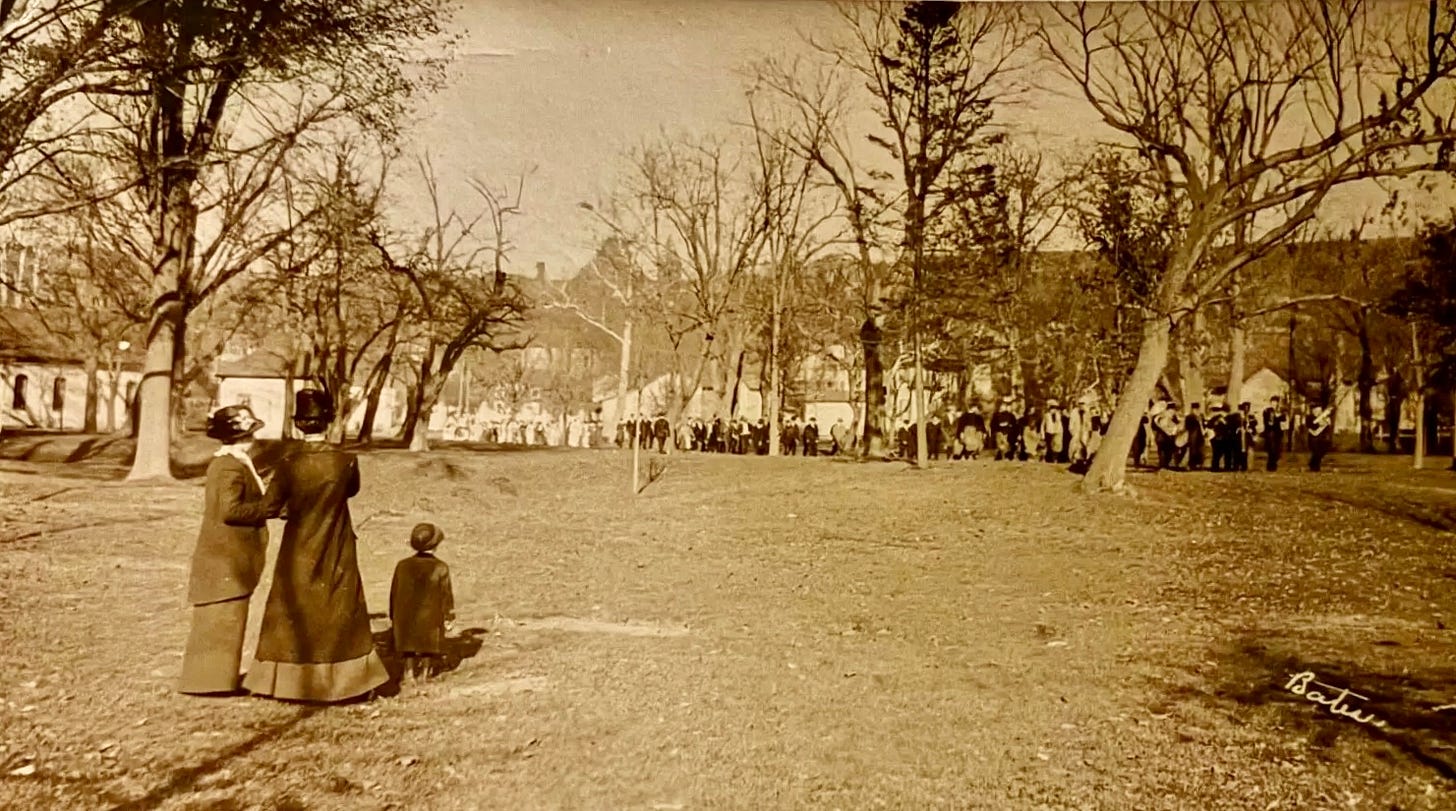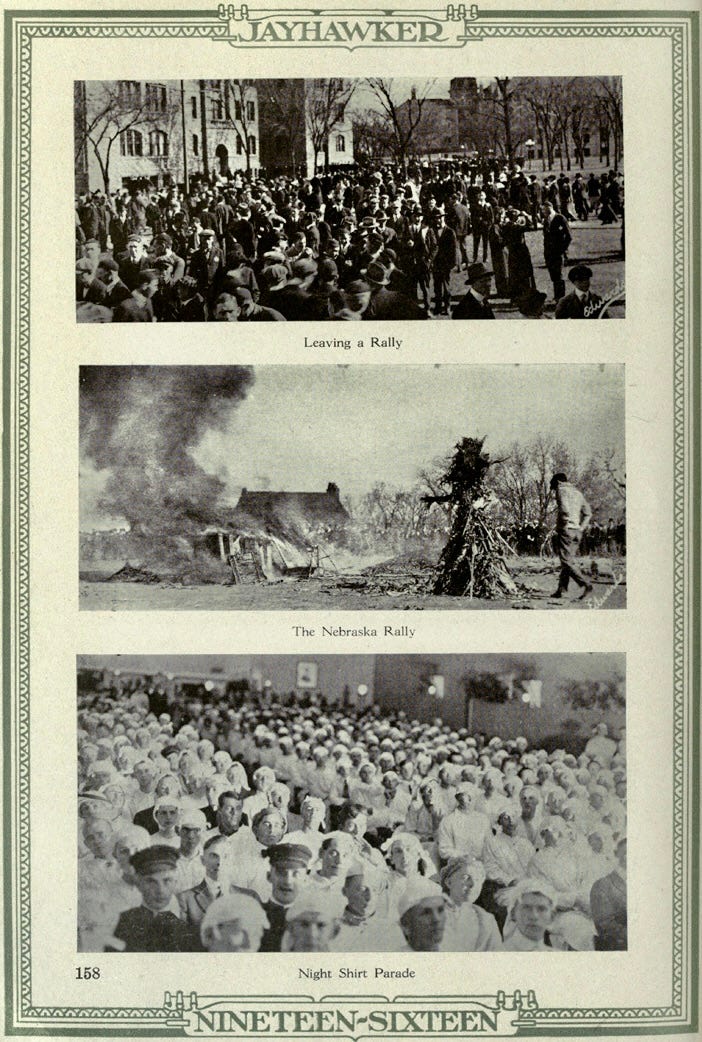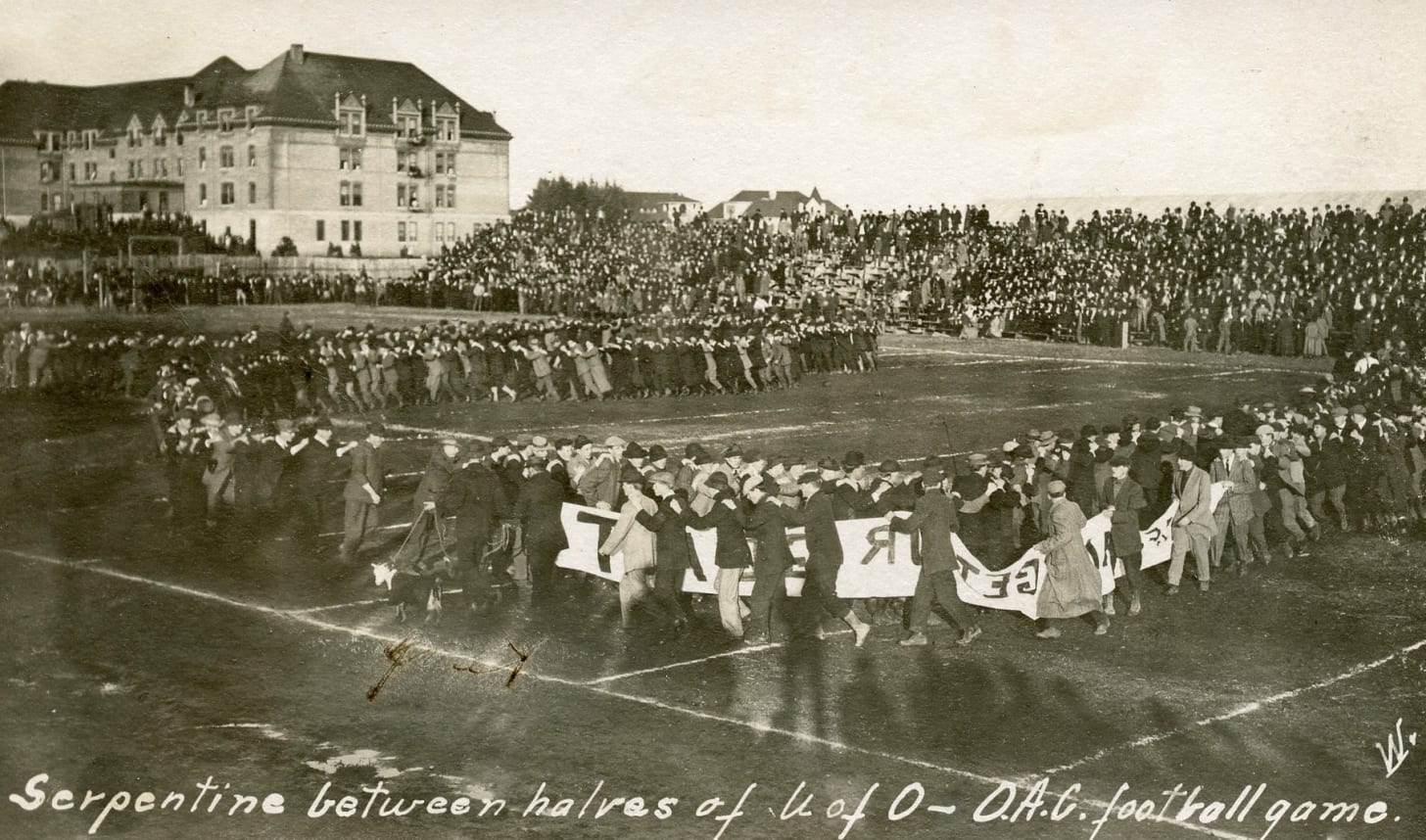Turn-of-the-Century Fan Traditions
As we conclude the formerly traditional bowl season, we should consider once-popular fan traditions that we no longer practice, at least most of them.
Throughout the game's history, part of the joy of football fandom has come from anticipating upcoming games. Even the worst teams offered fans a few kernels of hope that victory would come on Saturday. Today's talking heads and the writing heads of the past shared insights about each team's talents, health, psychology, and expected strategies during the week leading up to the game. Likewise, fans with team connections asked insightful questions to anticipate how the game would play out. Still, despite everyone’s best efforts, none knew what would happen on game day. That's why they played the games.
Collectively, fans did their best to turn the hoodoo, mojo, karma, or whatever ephemeral spirit in their favor through activities supporting their teams, such as meeting at the train station to send the boys off to away games.
Home games brought any number of activities, a few of which we review below.
Pre-Game Walk
Some pre-game walks involve only students and fans. A certain harmony comes from the best example involving Harvard students marching to the stadium while singing their fight song, "Up The Street," before the 1901 Yale game.
Even better, the Harvard tradition continues today, at least with alum band members.
Pre-game walks sometimes involve the team marching to the stadium wearing suits, sports coats, letter sweaters, or team gear. This player-involved form of pre-game walk occurs today at LSU, Wisconsin, and likely a host of other locations. The walk used to happen shortly before the game, with players suited up and prepared to take the field. Mansfield State did so in 1914 before they hosted Indiana of Pennsylvania, a game that determined the league champion.
A close-up of the image shows school band members leading the procession, followed by team members in uniform. Trailing the team are what appears to be other young men from campus and then the coeds, who often wore white to football games of the era. Missing are fans lining the team's path.
Pre-Game Parade
Kansas held its annual football season-opening parade in 1915. The governor, chancellor, and football coach led the parade. Two bands followed them in one streetcar, and the football team followed in another. A long line of cars containing students and townies fell in behind.
In addition, the night before the game, there was a pep rally, bonfire, and nightshirt parade (men only).
Freshmen Draft Animals
A fascinating tradition that once held sway was using freshmen men as draft animals. The night before their 1916 game with Colorado College, Utah held a march, bonfire, and pep rally at a theater. Even more fun occurred Friday afternoon when the fifty huskiest freshmen met the Colorado College team at the train station and hauled them to their hotel.
Using freshmen as draft animals also had a place at Washington State.

Snake Dances / Serpentines
Snake dances before games, at halftime, and in victory had a long tradition nationwide. Cincinnati paused the parade the night before its 1919 Thanksgiving Day game with Miami to perform a snake dance in the town square. The next day, it repeated the act at halftime. Oregon State and Utah State also enjoyed a dance or two.
In the end, while college bowl season has changed and no longer brings some traditions of old, many traditions our ancestors held dear before the bowl system existed have also faded. We've managed to get along without realizing they ever existed, so future generations will wonder what the mystique of bowl season was all about.
Click here for options on how to support this site beyond a free subscription.









Now how, may I ask, do these activities serve the educational mission?
Were there any earlier traditions, beyond the drags carrying Big 3 teams up Fifth Avenue to the Polo Grounds in the e. 1890s? ..